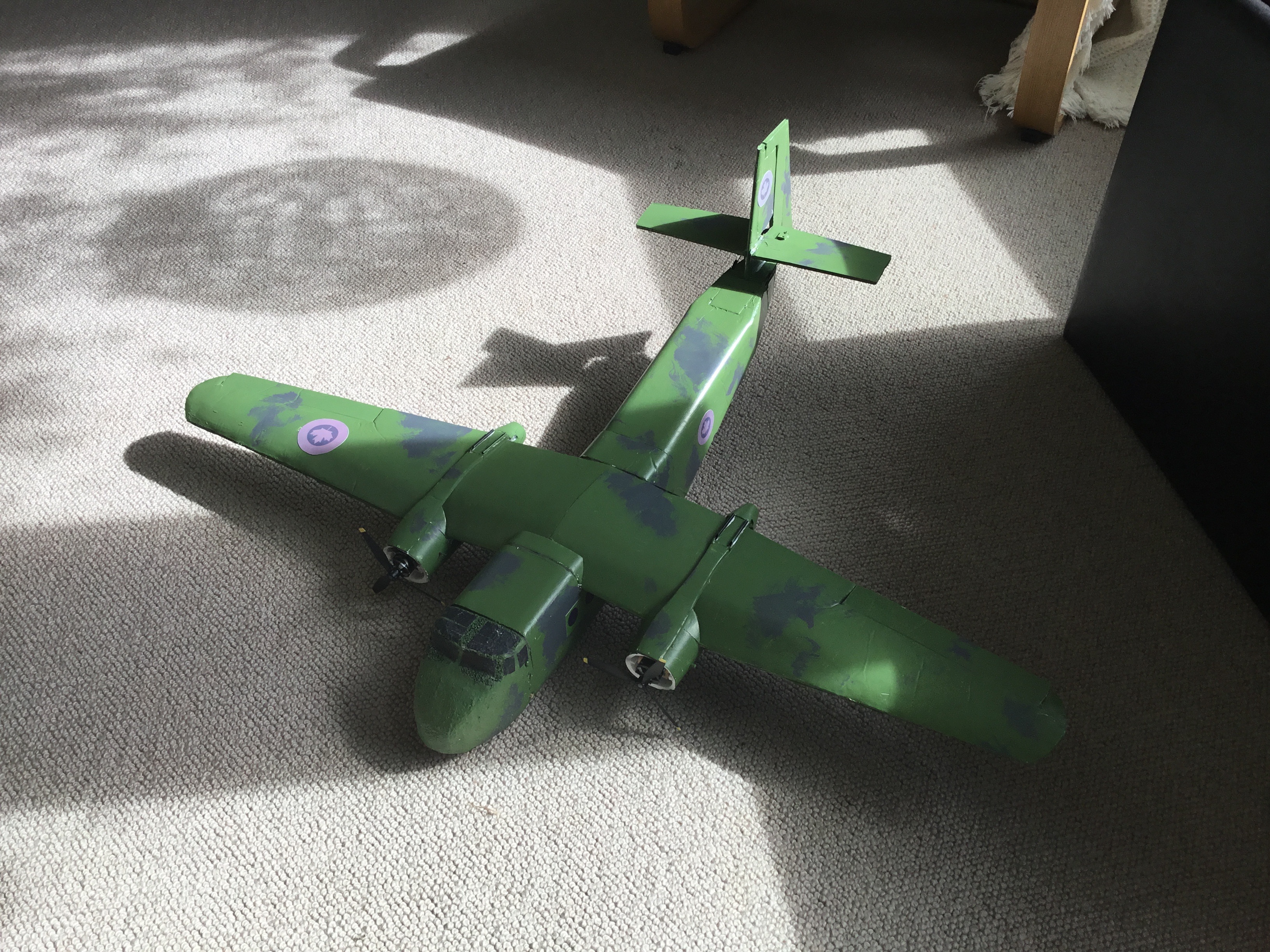8 years ago, when I began flying remote control planes, they mostly came from Craigslist and Used Victoria, ready to take to the air.
But last year, my grampa and I discovered Flite Test, an American company that designs RC planes and builds them from foam core board. Flite Test sells kits of these designs for people to build at home, with the foam core pieces already cut out. It also gives away its plans, posted online.
Since then, Gramps and I have built 16 planes altogether from Flite Test kits and plans. Then we decided we wanted a new challenge: to design our own for airplanes not available through Flite Test.
I decided on the Caribou. This is one of my all time favourite Canadien built aircraft that was used mostly for the US and AUS airforce. This aircraft had two engines, a sloping rear fuselage. And a very tall tail. The mini model that I made was a bit smaller in terms of the scale difference, but it all turned out fine.
You can buy kits for the Caribou in balsa wood, but not foam core board. So I set about making my own design, using the foam core techniques I’ve learned over the past year.
I started the design by looking at some old photos. There was no plans so I had to just go with my building instincts. All I used in the end to build it was a ruler, a pencil, a box cutter, and some hot glue. This took a very long time to build. It took nearly 4 days to design and 2 weeks to build. The easy part about this build is that I was working with foam board. This stuff is so easy to work with because it is so easy to cut, form and glue. The most challenging part of this build was making the wings. The folding had to be just right so that the plane would fly properly.

The first flight went really bad. It was so unstable that we had to bring it in to land almost right after we took off. But at least it flew. We went home with the feeling of “why did it fly so bad?”. My grandfather and I looked again at the photo of the aircraft and realized that the plane’s wing was at the wrong angle. But by that time it was time for me to go to bed. My grandfather continued to work on the plane after I went to bed.
The next morning I woke up to discover that my grandfather had re-angled the wing so that it flew like a V. Before it was flying strait and therefore not very good. The second test flight went much better than the first, but there was still something wrong with it. The tips of the wings were not creating lift because they were flat and not shaped like a wing.
We went home and addressed and made the bottoms of the wings curved instead of flat. And by that time it was time to paint the plane. We painted her in the Canadian airforce markings with the green and grey camoflage.

Then when the weather was right we took her out to have a 4th test flight. When we got to the field there was a little bit of a head wind so we would launch in that direction. We plugged in the battery, made sure all the controls were working and it was time to fly. This was a tense moment considering hat we had been working on this plane for nearly 3 weeks. I revved up the engines and grandpa gave it a chuck. It flew perfectly this time. I had finally realized my dream of flying a real, RC, DHC-4 Caribou.
This plane has a working back hatch that can drop a small toy parachute.

The electronics are a FliteTest A-pack, 850mAh battery, and a Spektrum AR620 Receiver. The propellers are from a UMX Turbo Timber.










Log In to reply
Log In to reply
Log In to reply
I'm a fellow Canuck from the interior of BC so obviously, I'm a big fan of anything De Havilland. Flown in Otters, Twin Otters and lots of Beavers (all on floats) but never this beast.
People are gonna start asking about plans...
Log In to reply
Log In to reply
Log In to reply
Log In to reply
Log In to reply
Log In to reply